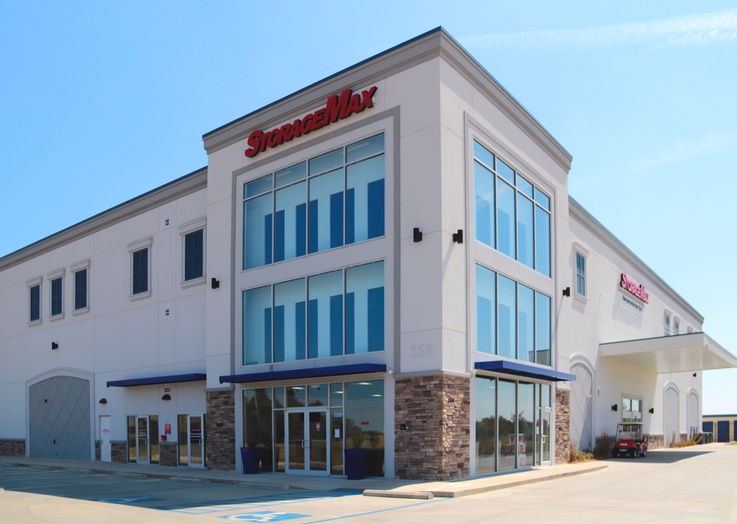What It’s Worth?
Determining The Real Value Of A Property
Operating a self-storage business also means owning a property—a physical building where tenants rent space. After becoming established, the owner/operator typically becomes mostly concerned with the day-to-day tasks of servicing customers and meeting payroll. But equally important is the need to keep tabs on (and hopefully increase) the value of the property.
The real value of a property becomes a relevant concern whenever a capital event occurs. “A capital event can be a sale but could also be a refinancing or the buyout of a partner who wishes to exit the business,” explains Steve Mellon, lead broker at Jones Lang LaSalle national self-storage team. “For example, say two brothers inherit a property. One wants in, but the other wants out. An accurate value will therefore be needed for one to buy the other out.”
The Formula
Fortunately, the formula for determining the value of a property is straightforward. Appraisers may use any of three methods: the cost approach, the market (or sales comparison) approach, or the income capitalization method. The latter is considered the most accurate.
In this scenario, “Value equals the net operating income divided by the capitalization rate,” explains Kate Spencer, managing director at Cushman and Wakefield in Dallas. The profitability of a facility and its value as an asset are thus intimately related.
Net operating income (NOI) is the revenue remaining after all normal operating expenses are deducted, while the capitalization rate is the owner/operator’s expected return on investment. Therefore, taking proactive steps to maximize incoming revenue is the single best way to enhance a property’s value.
What’s the most effective steps to accomplishing this? First is to know the facility’s true occupancy rate. Experts point out the essential distinction between physical and economic occupancy.
Mellon notes that owners looking to sell might tout a high physical occupancy rate but neglect to point out just what went into getting that level. If a facility heavily discounts its spaces, the total revenue brought in will be deceptively low. Economic occupancy takes the total incoming revenue, divides it by the number of units, and extrapolates what the resulting occupancy rate would be if all units were rented at full price. The gap between the two can be an indicator of the strength or weakness of the local market.
“For example, say a 10-by-10 should rent for $200 a month but, when a new customer comes in, the owner offers 50 percent off. If the facility fills up to 80 percent this way, that only reflects a 40 percent economic occupancy,” explains Mellon.
The alternative strategy is to hew a more conservative line, and only rent at the maximum of what the market will bear, which will produce a physical occupancy rate more in line with the facility’s profitability.
Mellon points out that both approaches have their pros and cons, as well as their own advocates. “But, however you get there, the cash you bring in ultimately supersedes everything.”
Boost Cash Flow
In addition to using pricing strategy to attract new customers, there are other techniques to boost cash flow and increase value. Strategically raising rents by incremental amounts is one example. Terry Campbell, vice president for self-storage financing at Live Oak Bank, illustrates this through an amazingly simple idea.
“Let’s say you have a facility with 500 occupied units that haven’t had a rent increase in a while,” says Campbell. “You raise the rent an average of $3 per month for each unit. Such a small increase will not motivate anyone to move out. That translates to an extra $1,500 each month in new revenue, or $18,000 per year. When divided by a cap rate of 7.5 percent, the move increases the facility’s value by $240,000, and you haven’t spent a dime.”
Working on the other side of the ledger, reducing expenses can also increase NOI. Strategies that Spencer points out include monitoring the property’s assessment to prevent being over taxed and keeping a close eye on routine operating expenses.
“Is the facility adequately but not overstaffed? Are employees being appropriately paid? And is the level of insurance optimal? Sometimes the lowest (and cheapest) level of coverage is not the smartest idea,” says Spencer. “And is routine maintenance being performed in a cost-effective way? A well cared for facility can command higher rents.”
In a nutshell, Spencer emphasizes that consistent attention to minimize expenses is the surest way to maximize NOI.
On the revenue side, she suggests keeping an eye on marketing. “If it’s ineffective, it needs to be addressed to bring in more customers.”
Making large capital improvements or expansions can also help to increase value. However, experts caution that exercising due diligence is essential.
“Let’s say I have a facility that’s old and decrepit, but it’s located in or near a high-income area,” Mellon says. “Investing in capital improvements there will allow me to raise rates and make the place more visually appealing to attract customers.
Mellon shares another example. “Let’s say we have a facility in Miami that’s 70 percent rented. The place isn’t climate controlled, which is essenrial in a hot place like Florida. Say it costs $100,000 to install climate-control equipment, but I know through my research that rental rates for climate-controlled units are up to 40 percent higher,” he says. “That will motivate me to spend to climate control the facility, and over the next year recruit new tenants that will pay the market rate rents. So, spending capital dollars to drive in market rates can be a good strategy.”
However, Mellon points out that a property’s special circumstances may negate this idea. “If a facility is in a hard to find area, painting and landscaping won’t help,” he says.
Although a property’s value is calculated by an objective formula, making weighty decisions about upgrading or expanding, or changing the strategy for increasing rents is ultimately an exercise in subjectivity. “Part of owning and managing a facility is knowing when and how to make those tough decisions,” explains Spencer.
Occasionally, however, a new and creative option appears that can help boost the owner/operator’s income.
Trusty Ideas
Movable storage structures are small prefabricated buildings (typically 10-by-20) with two to three units that can be placed near a facility rented to capacity. Thanks to innovative design, they appear almost identical to a permanent building. This relatively modest investment can produce significant added income. They also give the owner the ability to flex their rentable space up or down based on demand. Since they’re technically “temporary” in nature, movable structures can be placed in areas where a traditional building cannot be built, such as on a right of way or easement.
According to Campbell, movable structures offer an added tax incentive. “Typically, they can be written off in five years when classified as personal property or equipment, as opposed to 39 and one-half years with a traditional building.”
Another source of income is the sale of tenant insurance. Currently 16 states allow operators of self-storage facilities to qualify as agents licensed to sell insurance from major carriers to their customers. This offers operators the chance to earn sales commissions and customers the convenience of obtaining insurance (required by most operators) from the same party from which they rent.
Watch The Market
While a shrewd owner has several tools at her or his disposal to enhance a facility’s value, the most effective may be astute observation of the market. Most experts point to a regularly repeating cycle. Growing demand for space unleashes the simultaneous ambitions of many prospective owners anxious to invest. The result is usually overbuilding, which leads to a glut of available space, which in turn depresses values.
A period of absorption then follows, where incremental growth in population and the local economy increase demand and fill the surplus space, raising rates (and values) throughout the process. The savvy owner will take note of these high points and work to time capital events to these periods of maximum value.
Of course, the pattern is not absolutely assured. Severe recessions caused by unexpected events such as natural disasters or terrorist attacks can throw all presumptions out of kilter and serve as a reminder that the forces of the market are never entirely under one’s control.
But with determination, grit, and ingenuity, the conscientious owner can run a profitable facility and grow what, for some, is their biggest asset.
Paul Vachon is a freelance writer based in Detroit, Michigan. In addition to Mini-Storage Messenger, his articles have appeared in Crain’s Detroit Business, HOUR Detroit, The History Channel Magazine, and Michigan Meetings + Events.
More Content
Popular Posts
Recent Posts
Raise your hand if you’ve ever made plans,...
Everyone knows it: Investing in real estate...
When Germantown High School in Gluckstadt,...
It’s comforting to know that no matter how...
A very wise self-storage expert once said...
Senate Bill 709 (SB709) has many in the...
In January, self-storage industry veteran...
In April 1984, the first non-stop commercial...
Raise your hand if you’ve ever made plans,...
Everyone knows it: Investing in real estate...
When Germantown High School in Gluckstadt,...
It’s comforting to know that no matter how...









